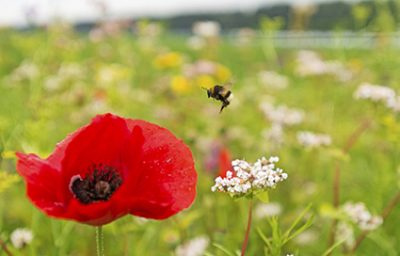Honeybees, Birds, Butterflies: Neonicotinoid Pesticides Destroy Wildlife, Fail to Increase Crop Yields
Sustainable Pest-control Strategies Are Cheaper, More Effective

The widespread use of wildlife-harming neonicotinoid pesticides is failing to deliver promised benefits to agricultural production, according to a study published today in the academic journal Environmental Science and Pollution Research.
The global assessment of 200 scientific studies by the International Task Force on Systemic Pesticides found that use of neonicotinoids over the past two decades has inflicted serious damage to birds, pollinators and other insects without generally increasing yields.
“This study should be the final nail in the coffin for these dangerous pesticides here in the U.S.,” said Lori Ann Burd, director of the Center for Biological Diversity’s environmental health program. “It’s mindboggling that while much of Europe and Canada are limiting the use of these poisons, the U.S. EPA is considering expanding their use across millions of acres.”
The study shows neonicotinoids can be phased out to protect pollinators and aquatic invertebrates without harming agricultural productivity; research also shows that farmers benefit from integrated pest management practices such as crop rotation and biological controls.
Moving forward, the study’s authors conclude that the documented harms of neonicotinoids must be weighed against evidence that use of the dangerous pesticides does not generally result in higher yields or profits.
The International Task Force on Systemic Pesticides is made up of the world’s leading experts on neonicotinoids and other systemic pesticides. Today’s study is the response of the scientific community to escalating worldwide concerns about the harm of these pesticides on biodiversity and ecosystems.
“Here in the U.S., it’s time the EPA started listening to the world’s leading scientists instead of pandering to companies hoping to squeeze more profits out of selling these dangerous pesticides,” said Burd. “This eye-opening study confirms that the EPA must move quickly to eliminate the unacceptable risk posed by neonics. The sooner the better.”
Background
Neonicotinoids are a class of pesticides known to have both acute and chronic effects on aquatic invertebrates, honeybees, birds, butterflies and other pollinator species; they are a major factor in overall pollinator declines. These systemic insecticides cause entire plants, including their pollen and nectar, to become toxic to pollinators. They are also slow to break down, and they build up in the environment.
A large and growing body of independent science has found overwhelming evidence linking neonicotinoids to declines in populations of bees, birds, earthworms, butterflies and other wildlife.
Neonicotinoids have long been known to pose serious harm to bee populations. EPA assessments released in December 2017 found the commonly used pesticides can also kill and harm birds of all sizes and pose significant dangers to aquatic invertebrates.
The EPA’s aquatic and non-pollinator risk assessment found that the majority of uses of neonicotinoids on currently registered crops resulted in risks to freshwater invertebrates that exceeded levels of concern — the threshold at which harm is known to occur.
Yet the same week the EPA released these risk assessments, the agency announced that it was considering allowing the highly toxic neonicotinoid pesticide, thiamethoxam, to be sprayed directly on 165 million acres of wheat, barley, corn, sorghum, alfalfa, rice and potatoes.

